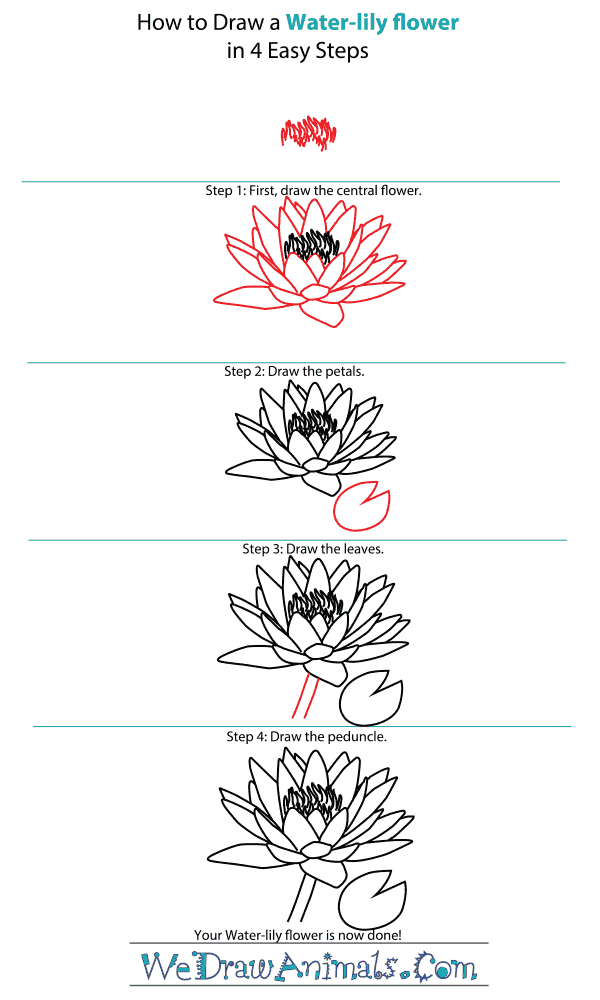In this quick tutorial you'll learn how to draw a Water Lily Flower in 4 easy steps - great for kids and novice artists.
The images above represents how your finished drawing is going to look and the steps involved.
Below are the individual steps - you can click on each one for a High Resolution printable PDF version.
At the bottom you can read some interesting facts about the Water Lily Flower.
Make sure you also check out any of the hundreds of drawing tutorials grouped by category.
How to Draw a Water Lily Flower - Step-by-Step Tutorial
Step 1: The first step is to draw the center of the flower by drawing small lines that look like grass.
Step 2: Then draw the petals by making lots of skinny pointed petals all around the center of the flower.
Step 3: In this step draw the leaf to the right of the flower and it should look like a lily pad.
Step 4: Lastly draw the stem by drawing a two lines below the flower that are slanted to the left.
Interesting Facts about Water Lilies
Water Lilies are flowers that grow on top of the water. They grow through the water and form green pads called “Lily pads.” They grow on ponds and some streams. The roots hold the flowers in place and connect to the bottom of the pond and stream beds. When the flowers bloom they are pointy petals nested inside each other. Normally the flowers are white or yellow. In tropical climates a water lily can be dark shades of pink. They open up in sunlight and close up at dusk.
Did you know?
- Along with Larkspurs, the blue variation of water lily is the birth flower for people born in July.
- Frogs like to use lily pads as hunting perches. When they are ready to eat they sit on lily pads and wait for food to get close enough to eat.
- There are 35 species of Water Lilies.
- Water Lilies are the national flower of Sri Lanka.
- The scent of water lilies is sometimes used for perfumes.
Lesson Plan Note: The famous painter Claude Monet painted a series of famous works of water lilies. Monet is one of the greats of art, and good lesson material for an art class.





